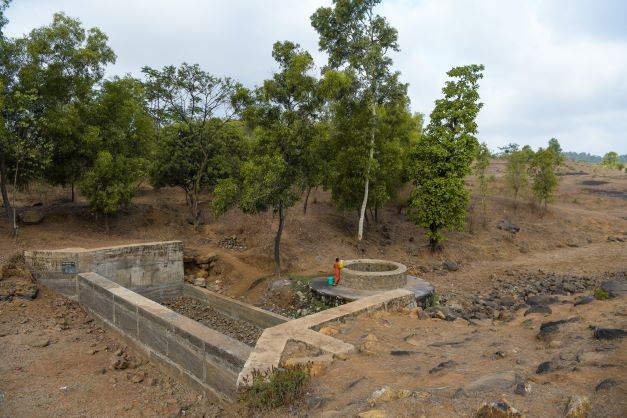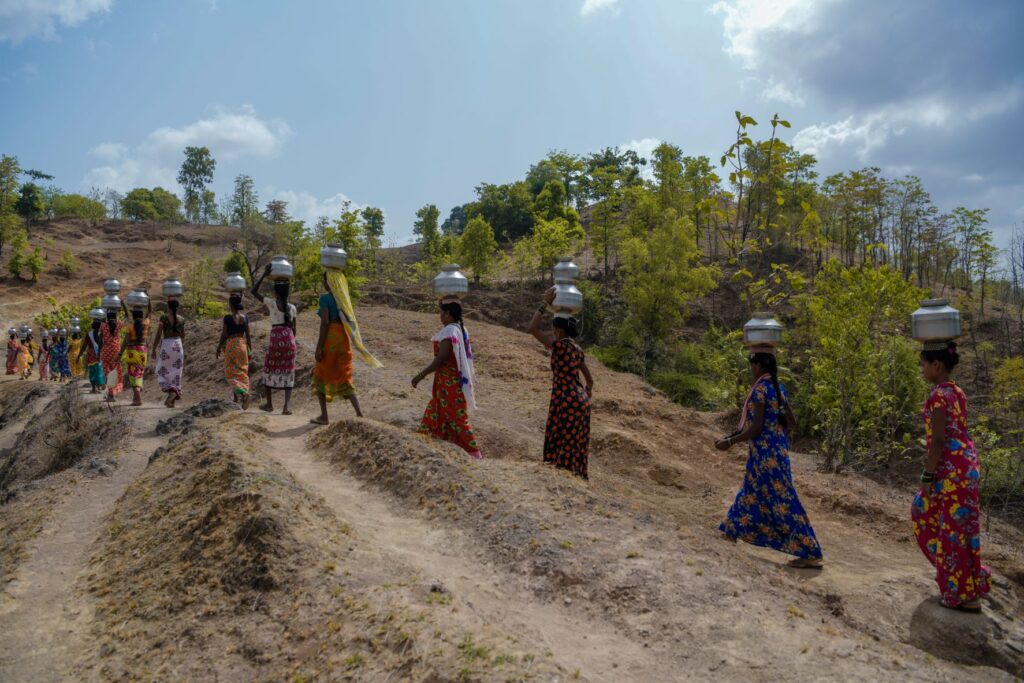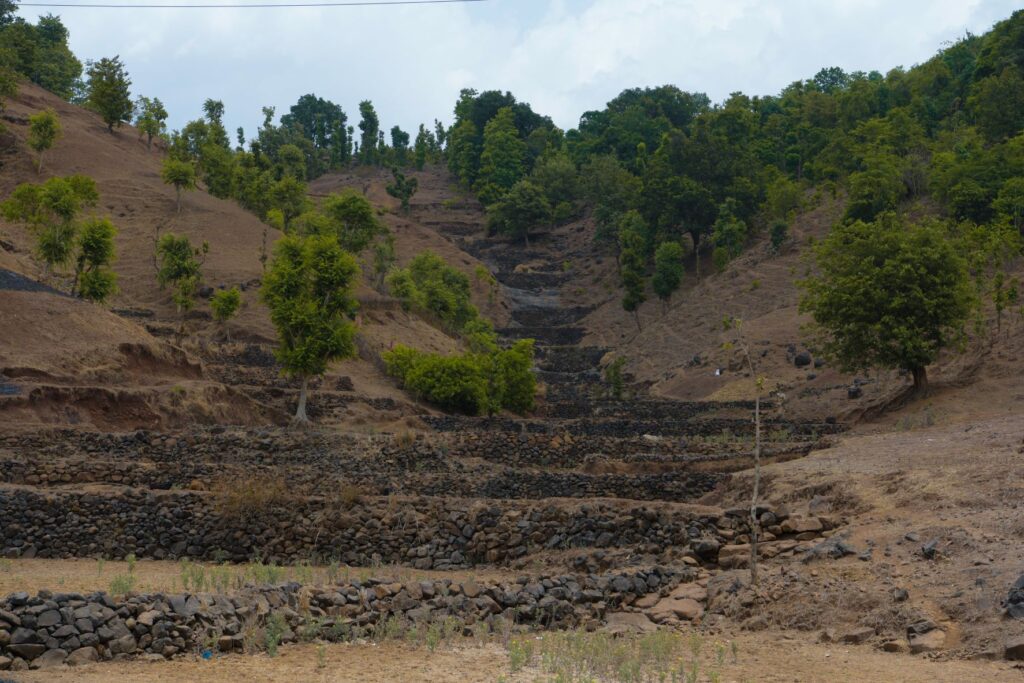Subsurface bunds to hold water underground
Deforestation and Water Resource Management from Grundfos Foundation | PDJF on Vimeo. Visuals by Avijit Ghosh
As the area consists of hills and valleys made of basalt rock, there are no water tables. Instead, in these areas, one can find water pockets which are usually underground aquifers where water moves in between rocks and soils throughout the year when it comes down from the hills to plain land.
“The challenge is, neither can sometimes the water be retained on the surface due to the slope nor can the underground water level be replenished with water during scorching summer, when the underground water level dries up and goes way below the well, the well gets dry,” says Dr. Umesh S Mundlye.
To deal with this situation of water sources getting dried up, one needs to hold the water on the hill slope throughout the year so that it recharges and does not flow away.
The common approach taken to do this is by making check dams and RCC bunds which not only costs a lot of money to create water retention areas above the surface but also leads to evaporation losses and someone has to give his/her land to build that structure. In the words of Dr Umesh S. Mundlye, 50, “We cannot go with a common approach everywhere. One idea succeeding somewhere doesn’t mean it will succeed everywhere. We have to think site-specific”.

The common approach to hold the water on the hill is by making check dams and RCC bunds. Photo: Avijit Ghosh
Dr Umesh, who is working for decades with the local NGO Pragati Pratishthan in this region, has adopted the method of subsurface bunding as a response to this problem in a few sites to help prevent the wells from drying up. In this case, they first visit the site and identify a location downstream of the well which is a common source of water for the village. They dig a trench in a selected spot and make retaining wall underground which acts as bunds to retain the water flow within. In this method, they create an artificial aquifer for the backup of the well. So, throughout the year, after rains when water flow from under the surface through rocks and soils, bunds will slow down that water flow and that will recharge this artificial aquifer and which in turn recharges the well and prevents it from drying. Since this structure holds the water underground the loss through evaporation becomes negligible and no one has to give up their land.
“It’s a win-win situation for all,” Dr Umesh says.



